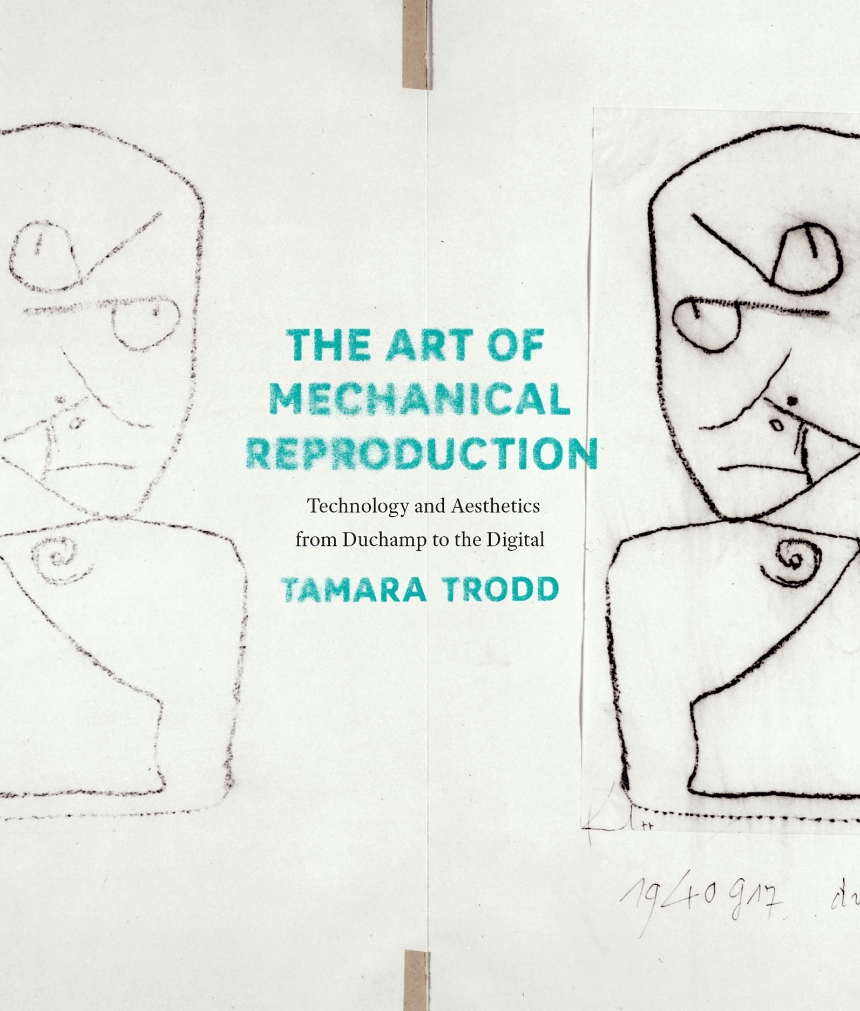The Art of Mechanical Reproduction
Technology and Aesthetics from Duchamp to the Digital
9780226131191
9780226178172
The Art of Mechanical Reproduction
Technology and Aesthetics from Duchamp to the Digital
The Art of Mechanical Reproduction presents a striking new approach to how traditional art mediums—painting, sculpture, and drawing—changed in the twentieth century in response to photography, film, and other technologies. Countering the modernist view that the medium provides advanced art with “resistance” against technological pressures, Tamara Trodd argues that we should view art and its practices as imaginatively responding to the potential that artists glimpsed in mechanical reproduction, putting art into dialogue with the commercial cultures of its time.
The Art of Mechanical Reproduction weaves a rich history of the experimental networks in which artists as diverse as Paul Klee, Hans Bellmer, Ellsworth Kelly, Robert Smithson, Gerhard Richter, Chris Marker, and Tacita Dean have worked, and it shows for the first time how extensively technological innovations of the moment have affected their work. Original and broad-ranging, The Art of Mechanical Reproduction challenges some of the most respected and entrenched criticism of the past several decades—and allows us to think about these artists anew.
The Art of Mechanical Reproduction weaves a rich history of the experimental networks in which artists as diverse as Paul Klee, Hans Bellmer, Ellsworth Kelly, Robert Smithson, Gerhard Richter, Chris Marker, and Tacita Dean have worked, and it shows for the first time how extensively technological innovations of the moment have affected their work. Original and broad-ranging, The Art of Mechanical Reproduction challenges some of the most respected and entrenched criticism of the past several decades—and allows us to think about these artists anew.
368 pages | 72 color plates, 62 halftones | 8 1/2 x 10 | © 2015
Reviews
Table of Contents
Acknowledgments
Introduction. The Art of Mechanical Reproduction
1 Mnemotechnics
Oil-transfer * Investing in drawing * Apparatus * Camera-seeing
2 Seeing Machines
The panorama device * Collage * Large Glass/shop window * Ball-Joint, Rotoreliefs, Guitar
3 Camera Vision
Painting shadows * Automatic drawing * Screening the body * Screen memories
4 Xeroxing the Medium
Working Drawings * Mapping “systems” * Photo-plus-text * The dialectical image
5 Painting at a Standstill
Don’t look now * The stilled and moving image * Pathos formulae
6 Farewell to the Machine Age?
The film machine * Mechanical ballets * Dean’s long lens * Film machines after film
Notes
Index
Introduction. The Art of Mechanical Reproduction
1 Mnemotechnics
Oil-transfer * Investing in drawing * Apparatus * Camera-seeing
2 Seeing Machines
The panorama device * Collage * Large Glass/shop window * Ball-Joint, Rotoreliefs, Guitar
3 Camera Vision
Painting shadows * Automatic drawing * Screening the body * Screen memories
4 Xeroxing the Medium
Working Drawings * Mapping “systems” * Photo-plus-text * The dialectical image
5 Painting at a Standstill
Don’t look now * The stilled and moving image * Pathos formulae
6 Farewell to the Machine Age?
The film machine * Mechanical ballets * Dean’s long lens * Film machines after film
Notes
Index
